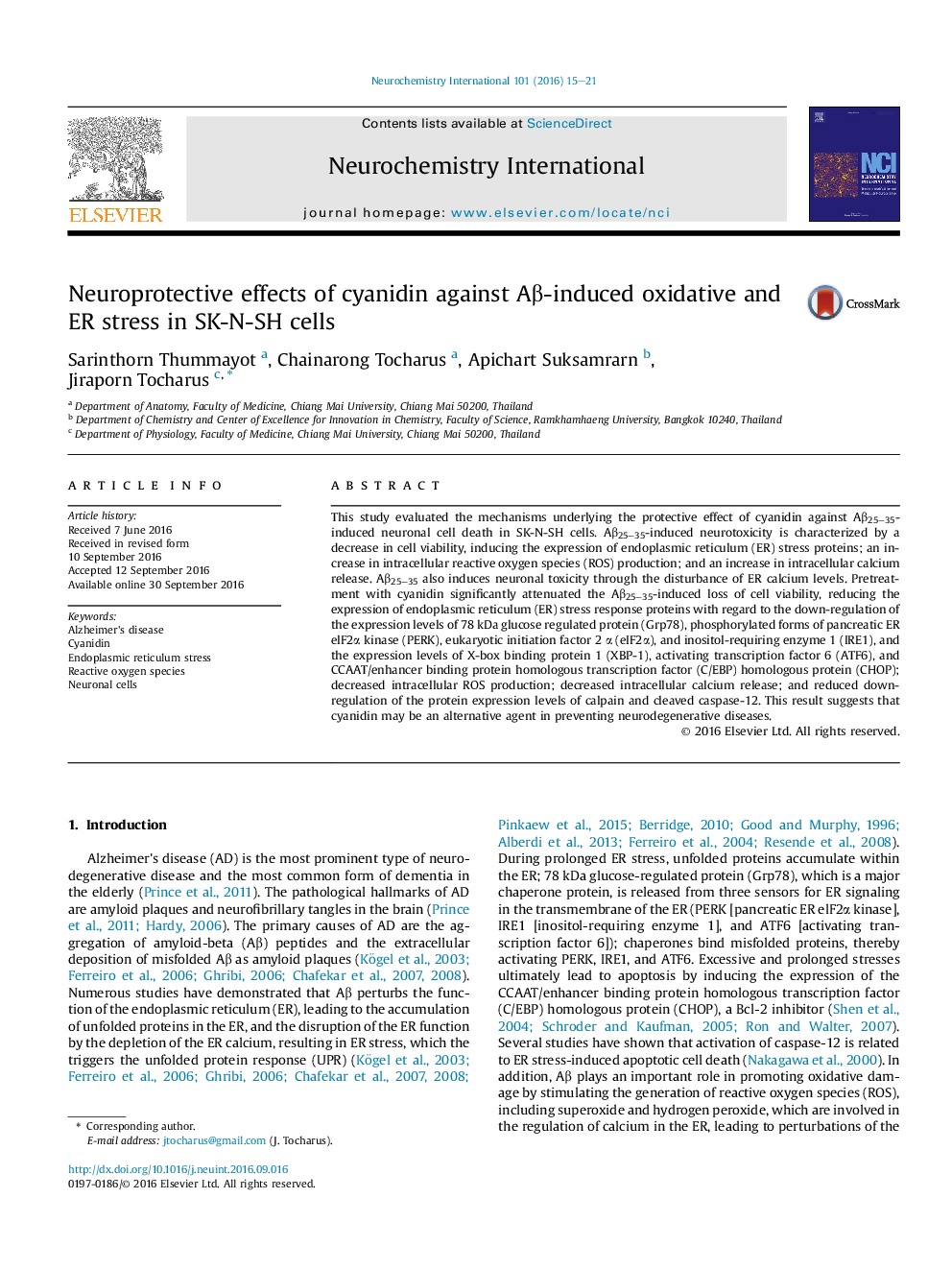| Article ID | Journal | Published Year | Pages | File Type |
|---|---|---|---|---|
| 5534766 | Neurochemistry International | 2016 | 7 Pages |
â¢Cyanidin protects SK-N-SH cells against Aβ25-35 - induced oxidative stress.â¢Cyanidin protects SK-N-SH cells against Aβ25-35 via inhibition of ER stress and also regulating calcium homeostasis.â¢Cyanidin may be a potential alternative therapeutic agent for protecting against neurodegenerative diseases.
This study evaluated the mechanisms underlying the protective effect of cyanidin against Aβ25-35-induced neuronal cell death in SK-N-SH cells. Aβ25-35-induced neurotoxicity is characterized by a decrease in cell viability, inducing the expression of endoplasmic reticulum (ER) stress proteins; an increase in intracellular reactive oxygen species (ROS) production; and an increase in intracellular calcium release. Aβ25-35 also induces neuronal toxicity through the disturbance of ER calcium levels. Pretreatment with cyanidin significantly attenuated the Aβ25-35-induced loss of cell viability, reducing the expression of endoplasmic reticulum (ER) stress response proteins with regard to the down-regulation of the expression levels of 78 kDa glucose regulated protein (Grp78), phosphorylated forms of pancreatic ER elF2α kinase (PERK), eukaryotic initiation factor 2 α (eIF2α), and inositol-requiring enzyme 1 (IRE1), and the expression levels of X-box binding protein 1 (XBP-1), activating transcription factor 6 (ATF6), and CCAAT/enhancer binding protein homologous transcription factor (C/EBP) homologous protein (CHOP); decreased intracellular ROS production; decreased intracellular calcium release; and reduced down-regulation of the protein expression levels of calpain and cleaved caspase-12. This result suggests that cyanidin may be an alternative agent in preventing neurodegenerative diseases.
